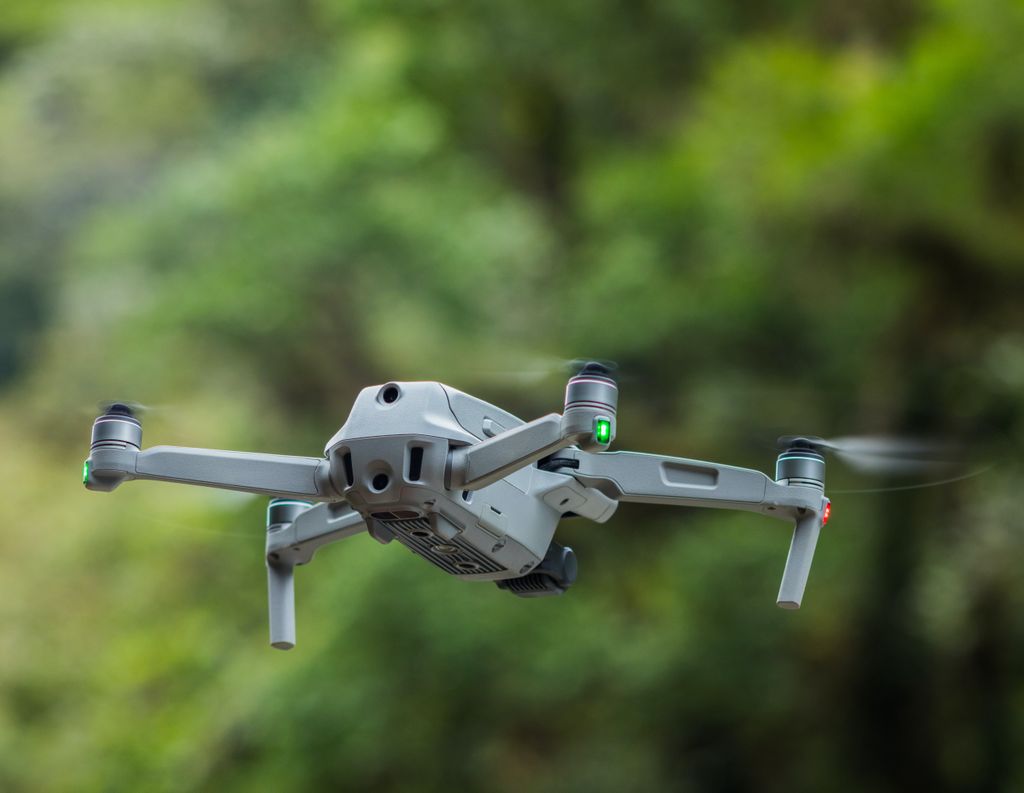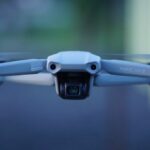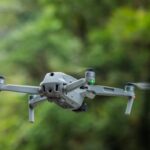The DJI Mavic Mini is a popular drone choice for many enthusiasts and beginners. It offers a compact and lightweight design, impressive flight performance, a high-quality camera, and an intuitive remote controller. However, there are also some cons to consider, such as limited wind resistance, lack of obstacle avoidance, no 4K video recording, and limited range. Despite these drawbacks, the DJI Mavic Mini is still worth buying for its portability, ease of use, stable flight, good image and video quality, and long battery life. When comparing it to other DJI drones, it stands out as an ideal option for beginners and casual users, providing great value for the price. Advanced users may need to consider their specific needs and requirements before making a decision.
Key Takeaways
- The DJI Mavic Mini offers a compact and lightweight design, making it highly portable and easy to carry.
- It delivers impressive flight performance, with stable and smooth flight capabilities.
- The drone features a high-quality camera that captures good image and video quality.
- The intuitive remote controller enhances the user experience and makes flying the drone a breeze.
- The DJI Mavic Mini has a long battery life, allowing for extended flight time.
Overview of the DJI Mavic Mini

Compact and Lightweight Design
The DJI Mavic Mini is known for its compact and lightweight design, weighing under 250 grams. This makes it incredibly portable and easy to handle, allowing for great maneuverability. Its foldable design adds to its portability, making it convenient to carry around. Despite its small size, the Mavic Mini offers a good range of 1km, allowing for exploration and flying further than expected. Additionally, it features stable GPS flight, ensuring a smoother and more controlled flying experience for steady shots.
Impressive Flight Performance
The DJI Mavic Mini offers impressive flight performance, providing stable and accurate flying. With its GPS navigation, you can rely on smooth and steady flights. The drone’s compact and lightweight design enhances its maneuverability, allowing for agile movements in the air. Additionally, the intuitive remote controller makes it easy to control the drone with precision. Overall, the DJI Mavic Mini delivers a seamless flying experience.
High-Quality Camera
The DJI Mavic Mini is equipped with a high-quality camera that delivers impressive image and video quality. With a resolution of 1080p, the camera captures clear and detailed footage, making it suitable for various photography and videography needs. The camera is also equipped with a stabilized gimbal, which ensures smooth video capture and reduces shakiness, resulting in improved overall video quality. Additionally, the Mavic Mini’s camera has a long battery life, allowing for extended filming and exploration. Overall, the high-quality camera of the DJI Mavic Mini provides users with the ability to capture stunning aerial shots and footage.
Intuitive Remote Controller
Customers find the remote control easy to use. They mention that it is fun to fly, convenient, and easy to pair. The intuitive layout and comfortable ergonomics of the remote controller contribute to a seamless flying experience. With the remote control, users can effortlessly navigate the DJI Mavic Mini and access its various features and functions. Whether you are a beginner or an experienced drone pilot, the intuitive remote controller ensures a user-friendly and enjoyable flying experience.
Pros of the DJI Mavic Mini

Portability and Ease of Use
The DJI Mavic Mini is super portable, making it incredibly convenient to carry around. Its foldable design adds to its portability, allowing you to easily take it with you wherever you go. With a range of 1km, you can explore and fly the drone further than you might expect. The stable GPS flight ensures a smoother and more controlled flying experience, which is great for capturing steady shots. Additionally, the Mavic Mini has a 30-minute battery life, giving you plenty of time to enjoy flying without worrying about the battery running out quickly.
Stable and Smooth Flight
The DJI Mavic Mini offers stable and smooth flight performance, ensuring that your aerial footage is captured with precision and clarity. With its 3-axis gimbal, the drone provides stable 3-axis footage, resulting in smooth video capture. Whether you’re capturing scenic landscapes or fast-paced action, the Mavic Mini’s stable flight capabilities will ensure that your shots are steady and free from unwanted vibrations. Additionally, the drone’s powerful brushless motors contribute to its stable flight performance, allowing it to handle windy conditions with ease.
Good Image and Video Quality
The DJI Mavic Mini offers impressive image and video quality, especially considering its compact size and affordable price. With its 1080p HD camera, you can capture high-quality footage that is clear and detailed. The stabilized gimbal ensures smooth video capture, reducing shakiness and improving the overall quality of your shots. Whether you’re capturing stunning landscapes or recording dynamic action shots, the DJI Mavic Mini delivers excellent image and video quality that will impress both beginners and more experienced users.
Long Battery Life
The DJI Mavic Mini boasts an impressive flight time of up to 33 minutes, which is exceptional for a drone of its size. This extended battery life allows users to have longer sessions and capture all the shots they need without worrying about running out of power. Whether you’re exploring scenic landscapes or shooting videos, the Mavic Mini’s long battery life ensures that you have ample time to get the perfect shot. With up to 33 minutes of flight time, you can confidently fly the Mavic Mini for extended periods and make the most out of your aerial photography and videography sessions.
Cons of the DJI Mavic Mini

Limited Wind Resistance
The DJI Mavic Mini has a limited wind resistance capability, which means it may struggle to maintain stability in strong winds. This is an important consideration for users who plan to fly the drone in areas with high wind speeds. It is recommended to avoid flying the Mavic Mini in windy conditions to prevent any potential issues or accidents. However, in moderate wind conditions, the Mavic Mini has shown satisfactory performance and stability. It is important to note that wind resistance can vary depending on factors such as the weight of the drone, the presence of propeller guards, and the flying skills of the operator.
Lack of Obstacle Avoidance
One drawback of the DJI Mavic Mini is its lack of obstacle avoidance feature. Unlike some other models, the Mavic Mini does not have sensors to detect and avoid obstacles in its flight path. This means that when flying in complex environments, such as areas with trees or buildings, users need to be extra cautious to avoid collisions. While obstacle avoidance can be an incredible insurance policy, its necessity depends on the flying conditions. If you typically fly in open fields where obstacles are minimal, the lack of obstacle avoidance may not be a significant concern. However, if you are risk-averse or frequently fly in areas with potential obstacles, it may be worth considering other drone models that offer this feature.
No 4K Video Recording
One limitation of the DJI Mavic Mini is its lack of 4K video recording capability. While it can capture impressive footage at 2.7K resolution, it falls short in terms of the highest video quality available. This may be a drawback for users who prioritize ultra-high-definition videos for professional or cinematic purposes. However, it’s important to note that the Mavic Mini still delivers excellent image and video quality at its maximum resolution, providing clear and detailed visuals. For those who don’t require 4K recording, the Mavic Mini’s other features and performance make it a compelling option to consider.
Limited Range
One of the drawbacks of the DJI Mavic Mini is its limited range. While the range is decent, it’s not as extensive as some of the higher-end models. This means that you may not be able to fly the drone as far away from the remote controller as you would like. However, for most casual users and beginners, the range should still be sufficient for capturing stunning aerial footage and exploring the surroundings. It’s important to keep in mind the range limitations and plan your flights accordingly to avoid losing connection with the drone.
Comparison with Other DJI Drones

DJI Mavic Mini vs. DJI Spark
When comparing the DJI Mavic Mini and the DJI Spark, there are a few key differences to consider. The Mavic Mini is known for its compact and lightweight design, making it incredibly portable and easy to carry. On the other hand, the Spark offers more advanced features such as obstacle avoidance and gesture control. Both drones have high-quality cameras, but the Mavic Mini has a slight edge with its 2.7K video recording capability. Overall, if portability is your main priority, the Mavic Mini is the better choice. However, if you value advanced features and control options, the Spark may be more suitable for you.
DJI Mavic Mini vs. DJI Mavic Air
When comparing the DJI Mavic Mini and the DJI Mavic Air, there are a few key differences to consider. The Mavic Air 2 has a larger 1/2-inch sensor compared to the Mavic Air, resulting in impressive camera and flight performance features. With 48MP photos and the ability to capture 4K videos at 60 frames per second, the Mavic Air 2 offers excellent image and video quality. Additionally, its bigger sensor improves performance in low light conditions. On the other hand, the Mavic Mini is known for its compact and lightweight design, making it highly portable. While it may not have the same advanced features as the Mavic Air 2, it still offers stable flight and good image and video quality. Ultimately, the choice between the two drones depends on your specific needs and preferences.
DJI Mavic Mini vs. DJI Mavic Pro
When comparing the DJI Mavic Mini and the DJI Mavic Pro, there are a few key differences to consider. The Mavic Mini is a more compact and lightweight option, making it easier to transport and carry. However, the Mavic Pro offers more advanced features such as obstacle avoidance and 4K video recording. If portability is your main priority, the Mavic Mini is a great choice. But if you need more advanced capabilities, the Mavic Pro may be the better option. Ultimately, it depends on your specific needs and preferences.
Conclusion

Ideal for Beginners and Casual Users
The DJI Mavic Mini is an ideal choice for beginners and casual users who are looking for a compact and easy-to-use drone. With its lightweight design, it is highly portable and can be easily carried around. The intuitive remote controller makes it simple to control the drone and navigate through different flight modes. Additionally, the Mavic Mini offers stable and smooth flight performance, allowing beginners to fly with confidence. While it may not have advanced features like a camera or long-range flying, it provides a great entry point into the world of drones. Overall, the DJI Mavic Mini is a reliable and user-friendly option for those who are new to drone flying.
Great Value for the Price
The DJI Mavic Mini offers great value for its price. It provides impressive features and performance that are typically found in more expensive drones. The camera quality is quite good, capturing clear 1080p footage. Additionally, the 3-axis camera stabilization feature enhances video smoothness, which is usually seen in higher-end models. The powerful brushless motors contribute to robust performance and flight stability. One notable feature is the inclusion of GPS, which improves flight control and includes safety features like automatic return to home. Moreover, the drone has a range of up to 1km, which is impressive considering its price. Overall, the DJI Mavic Mini is a standout option in terms of affordability and advanced features.
Considerations for Advanced Users
For advanced users, the DJI Mavic Mini offers impressive power and versatility. With its impressive 34-minute maximum flight duration, you can enjoy longer aerial sessions without worrying about battery life. The drone is also capable of recording 4K films at 60 frames per second and capturing breathtaking 48-megapixel pictures, ensuring high-quality visuals. Additionally, the advanced obstacle avoidance system and intelligent tracking modes like Spotlight 2.0 and ActiveTrack 3.0 provide a safer and more dynamic flying experience. However, it’s important to note that the DJI Mavic Mini is less portable than the Mini 4 Pro due to its relative size and weight, and it lacks an integrated screen. Overall, the DJI Mavic Mini is a great choice for advanced users looking for a drone that offers impressive features and capabilities.
Conclusion
In conclusion, the DJI Mavic Mini is a worthy investment for both professionals and enthusiasts. While it may not have all the advanced features of the DJI Mavic Air 2, it offers a lightweight and portable design that is perfect for on-the-go use. With its reasonable price and impressive performance, the Mavic Mini is a great option for those on a budget or looking for a drone for recreational purposes. Whether you’re capturing breathtaking aerial shots or simply having fun, the DJI Mavic Mini is definitely worth considering.
Frequently Asked Questions
What is the flight time of the DJI Mavic Mini?
The DJI Mavic Mini has a flight time of up to 30 minutes.
Does the DJI Mavic Mini have obstacle avoidance?
No, the DJI Mavic Mini does not have obstacle avoidance.
Can the DJI Mavic Mini record 4K videos?
No, the DJI Mavic Mini can only record up to 2.7K videos.
What is the range of the DJI Mavic Mini?
The DJI Mavic Mini has a range of up to 4 kilometers.
Is the DJI Mavic Mini easy to fly for beginners?
Yes, the DJI Mavic Mini is designed to be easy to fly, making it suitable for beginners.
Does the DJI Mavic Mini come with a remote controller?
Yes, the DJI Mavic Mini comes with an intuitive remote controller.




